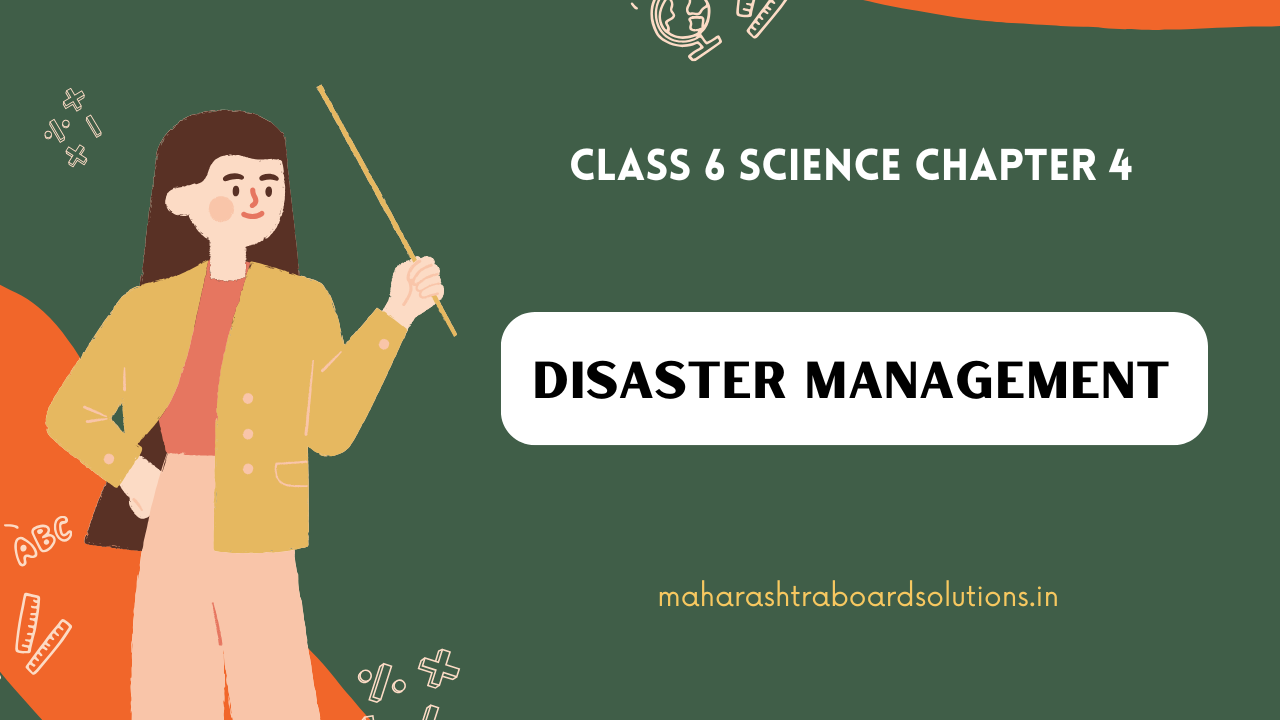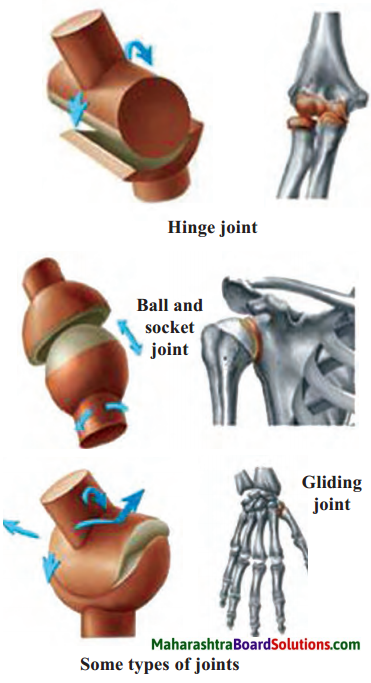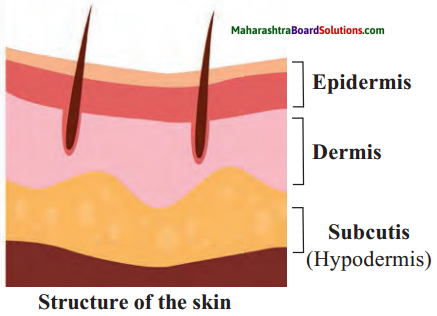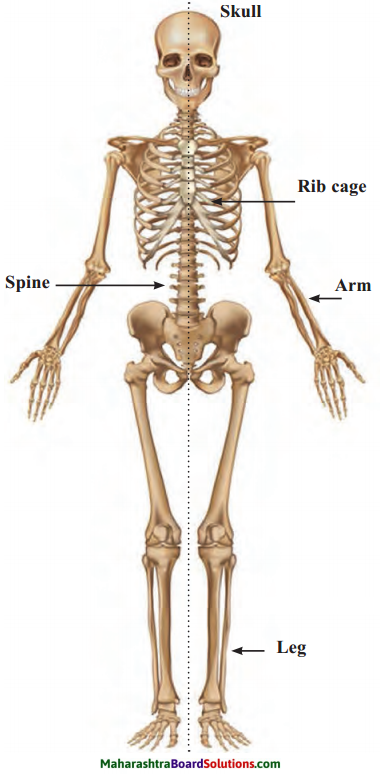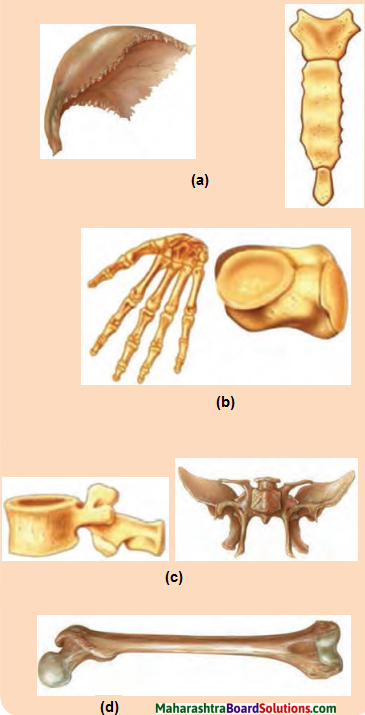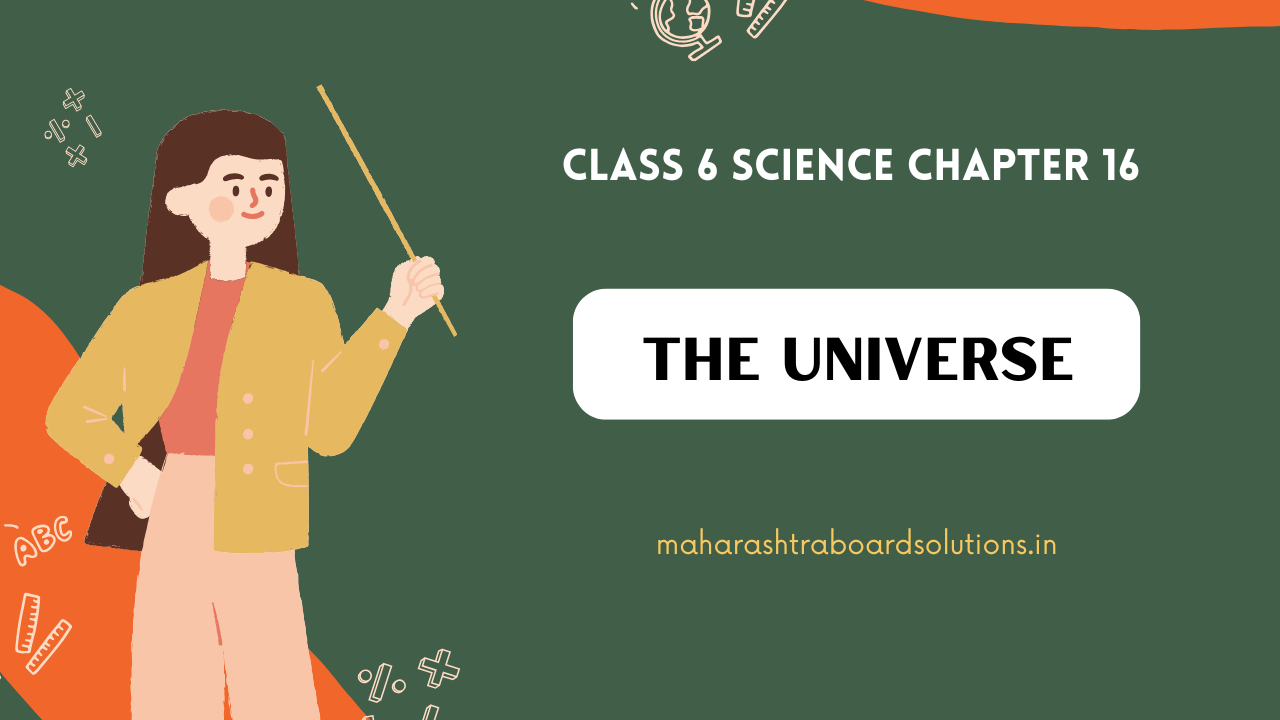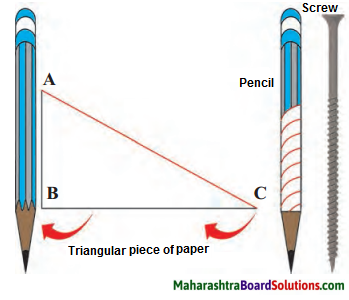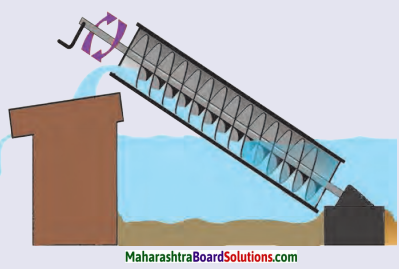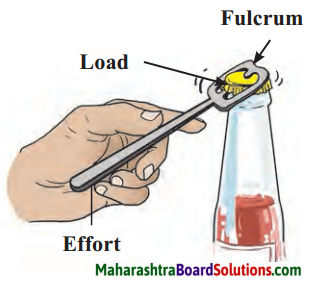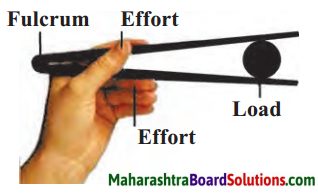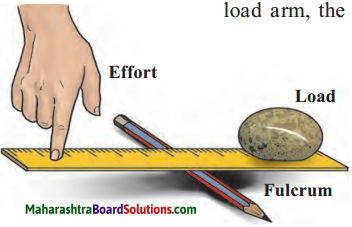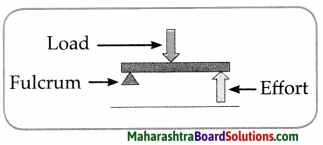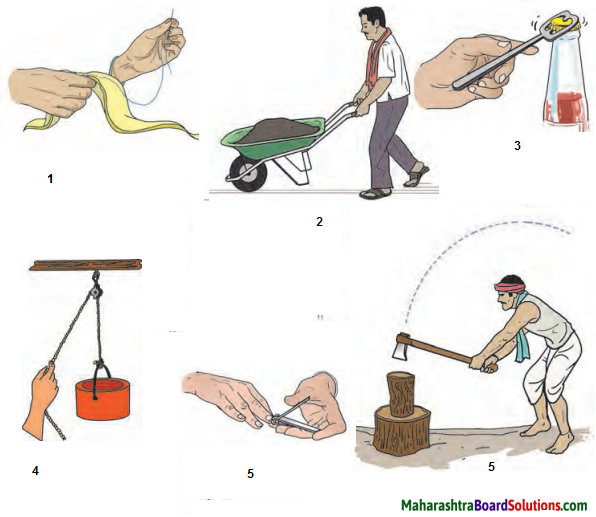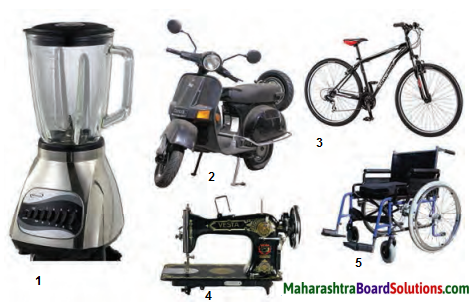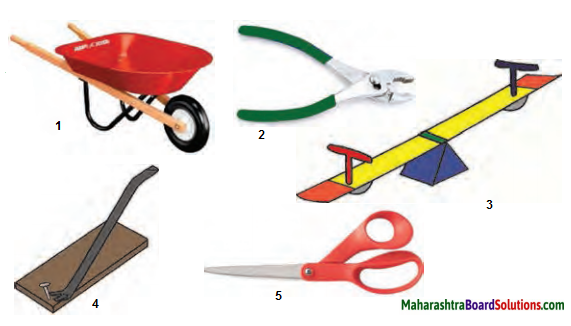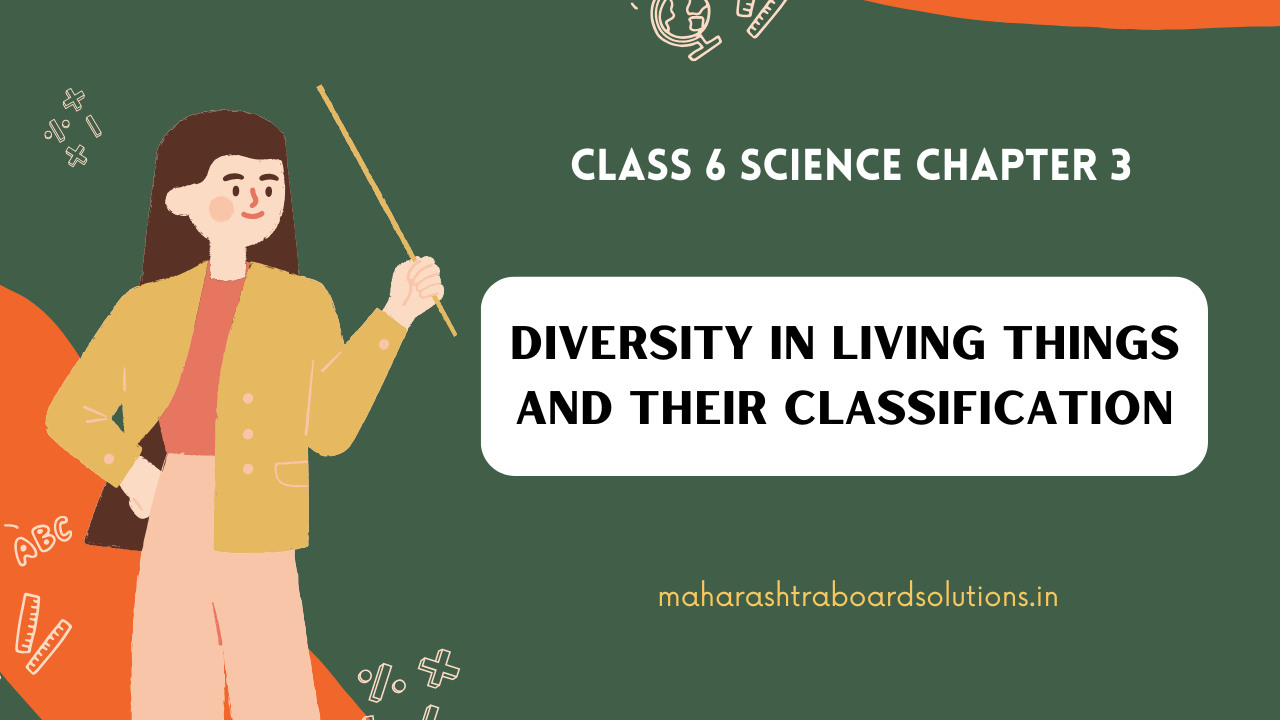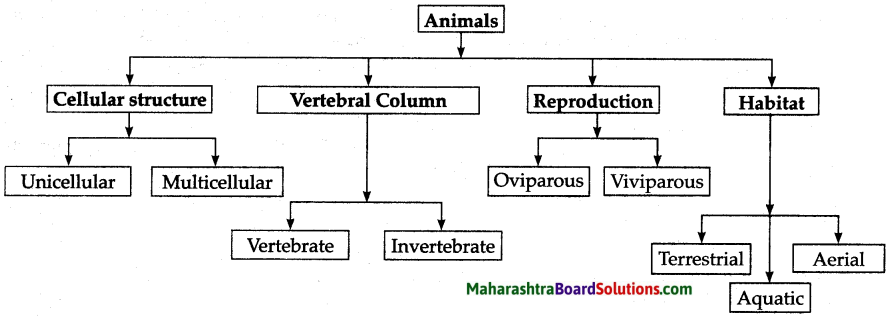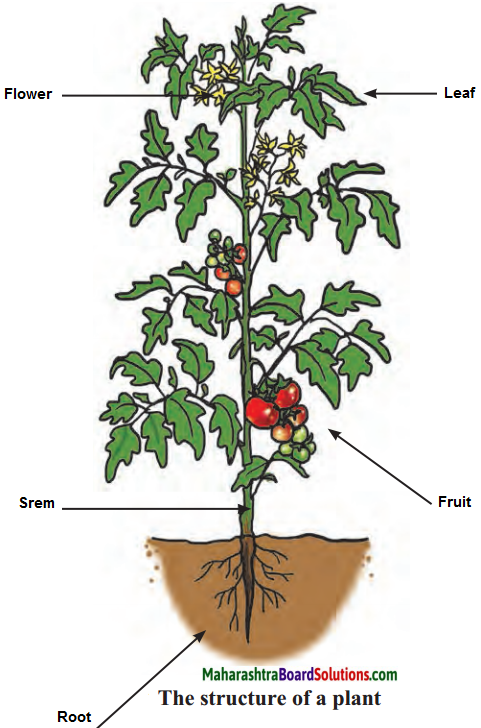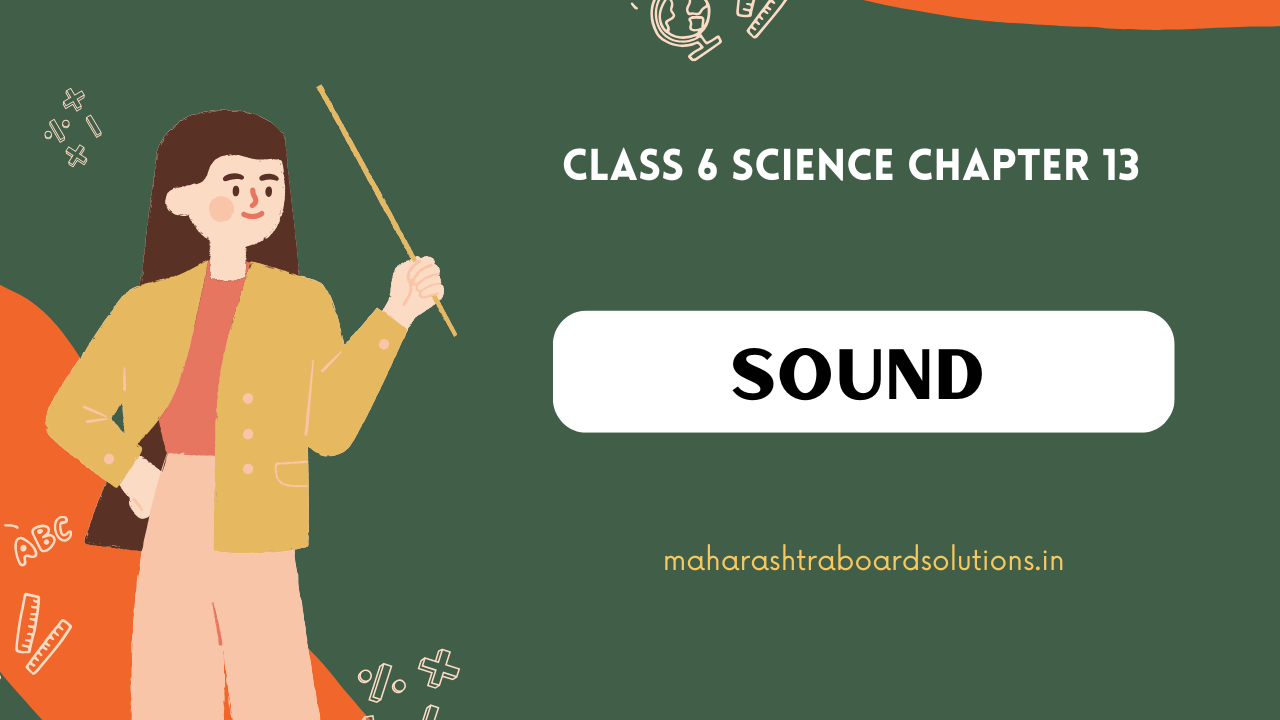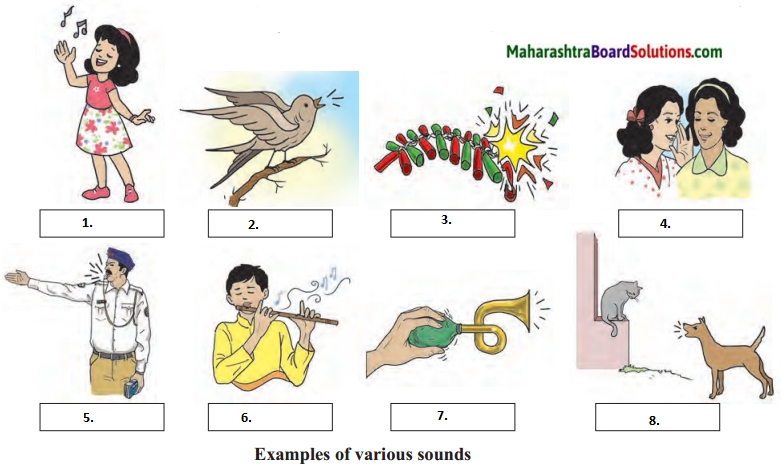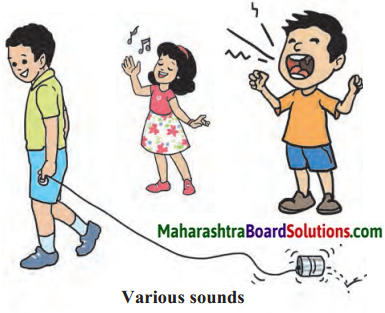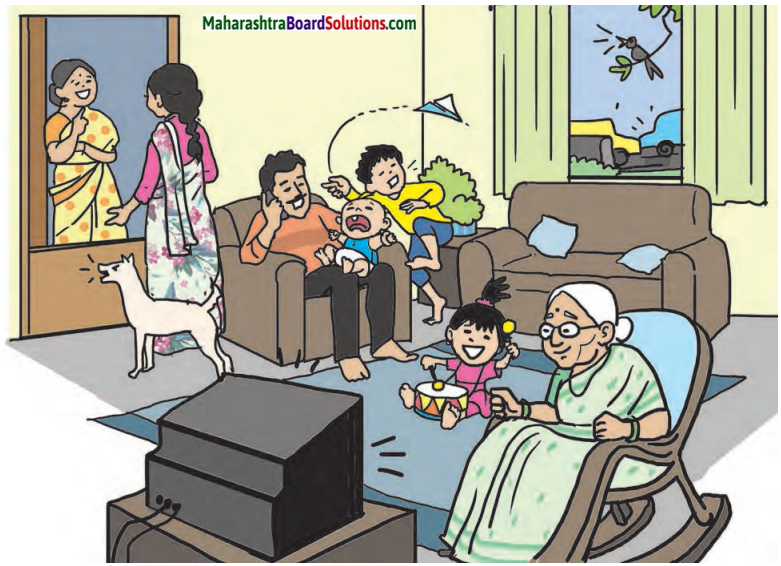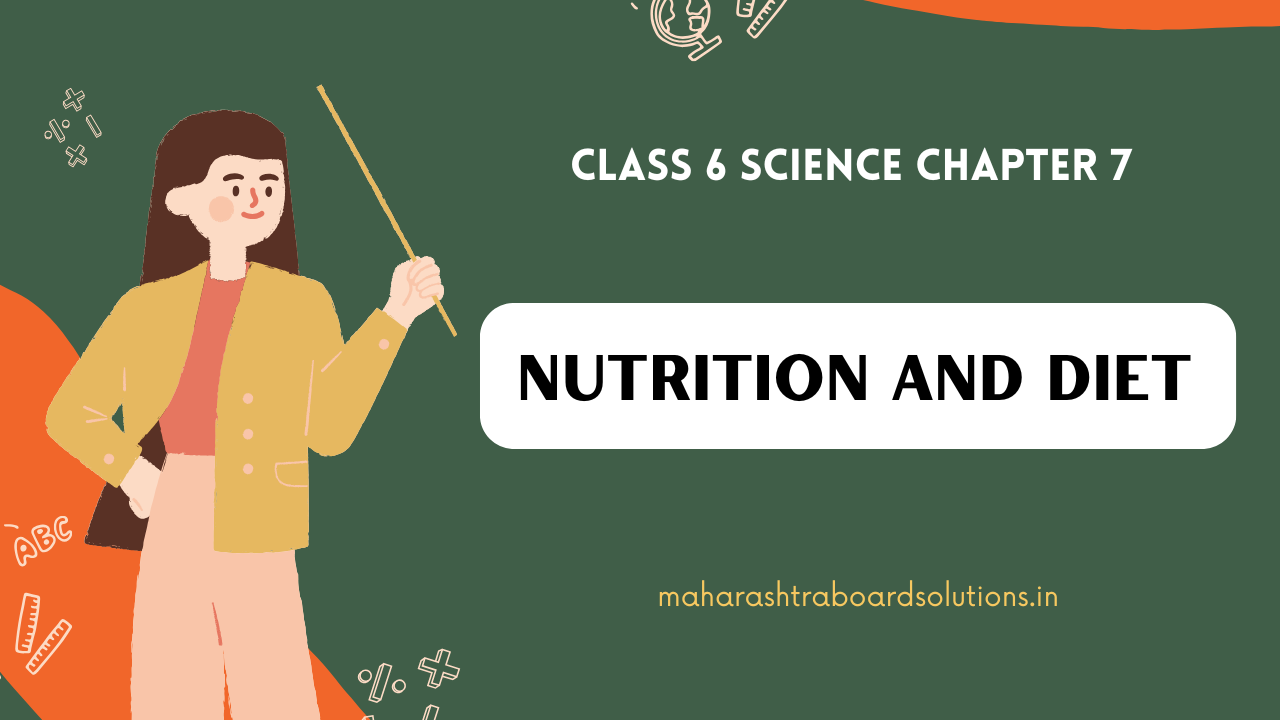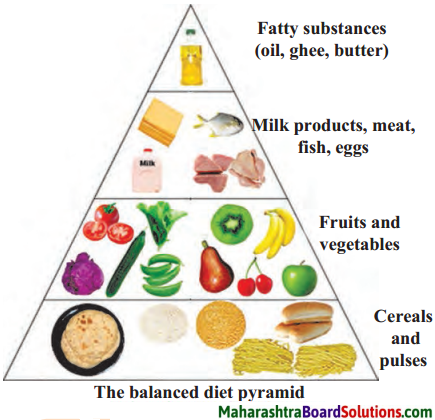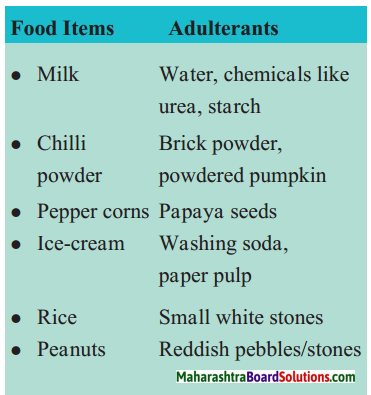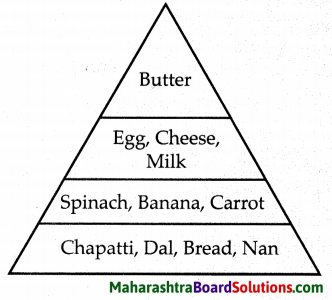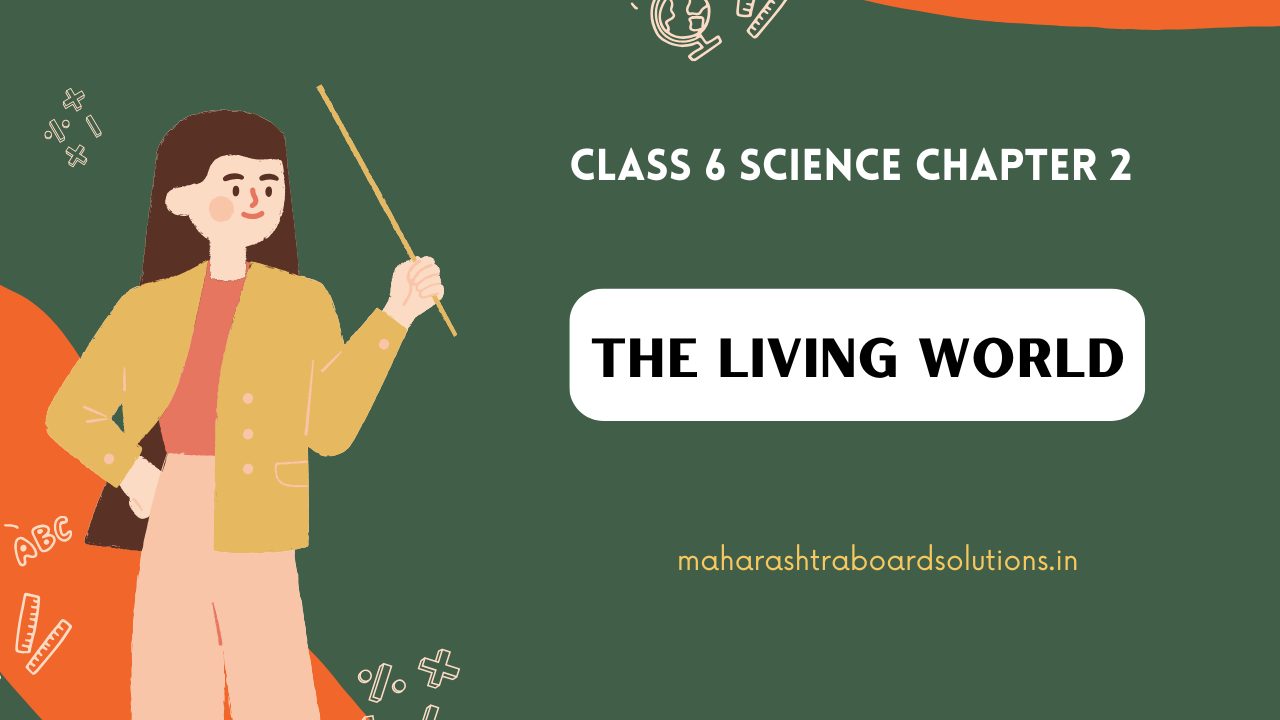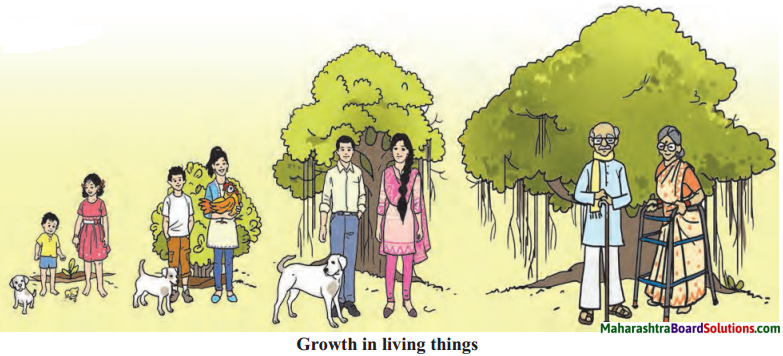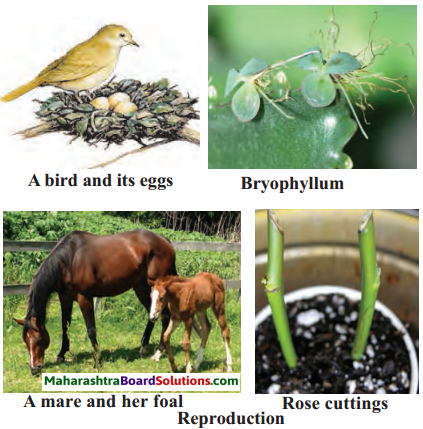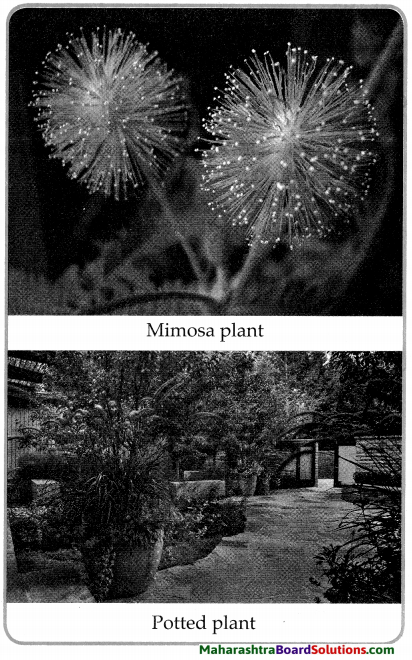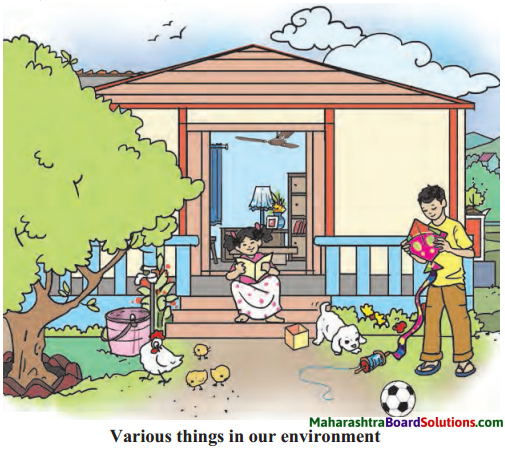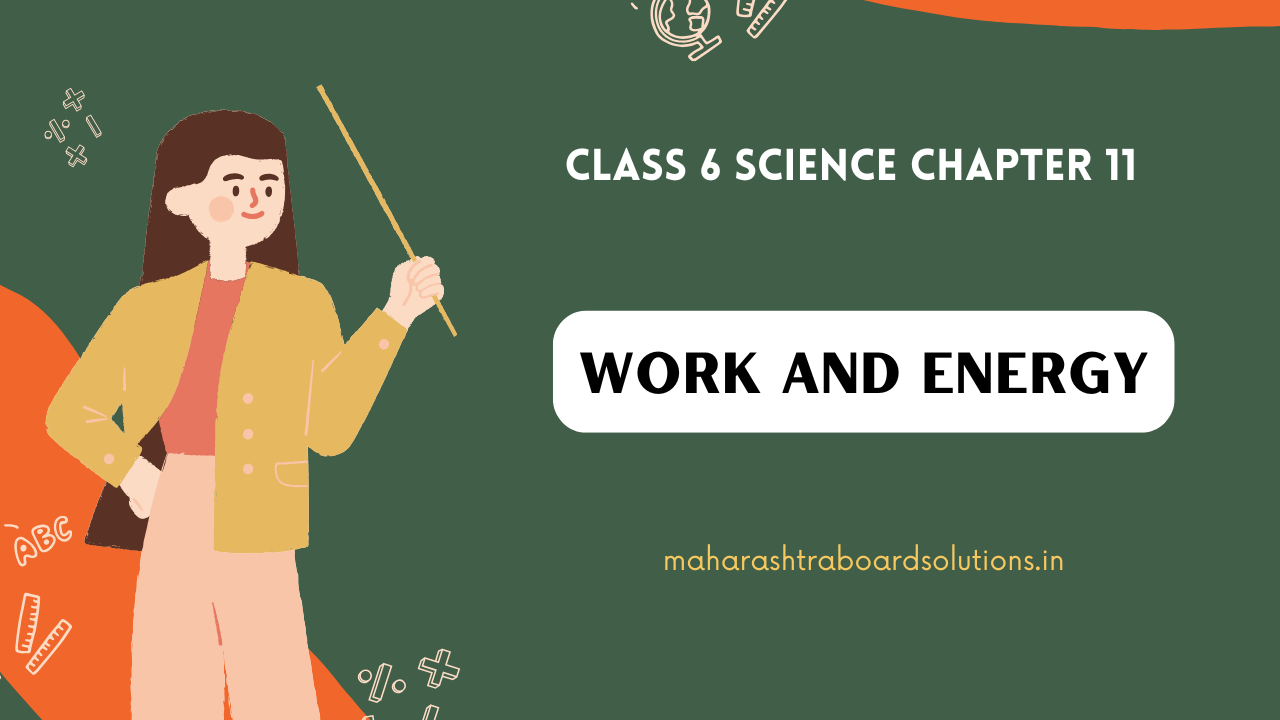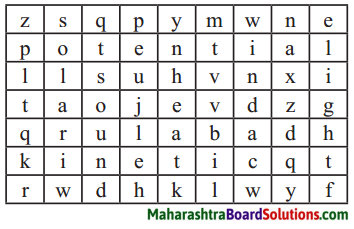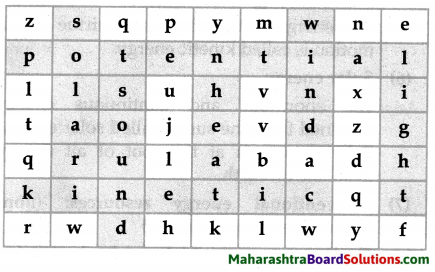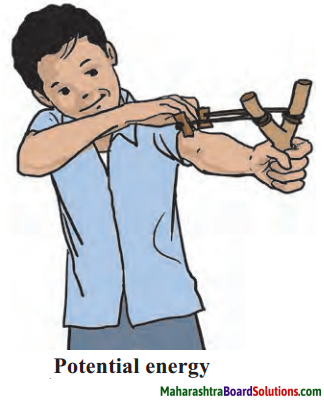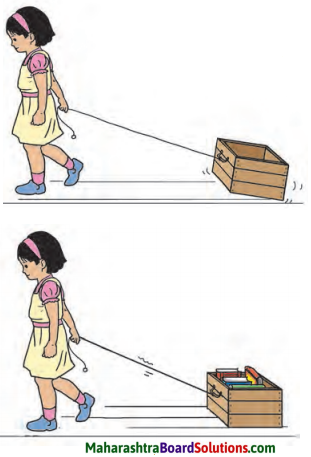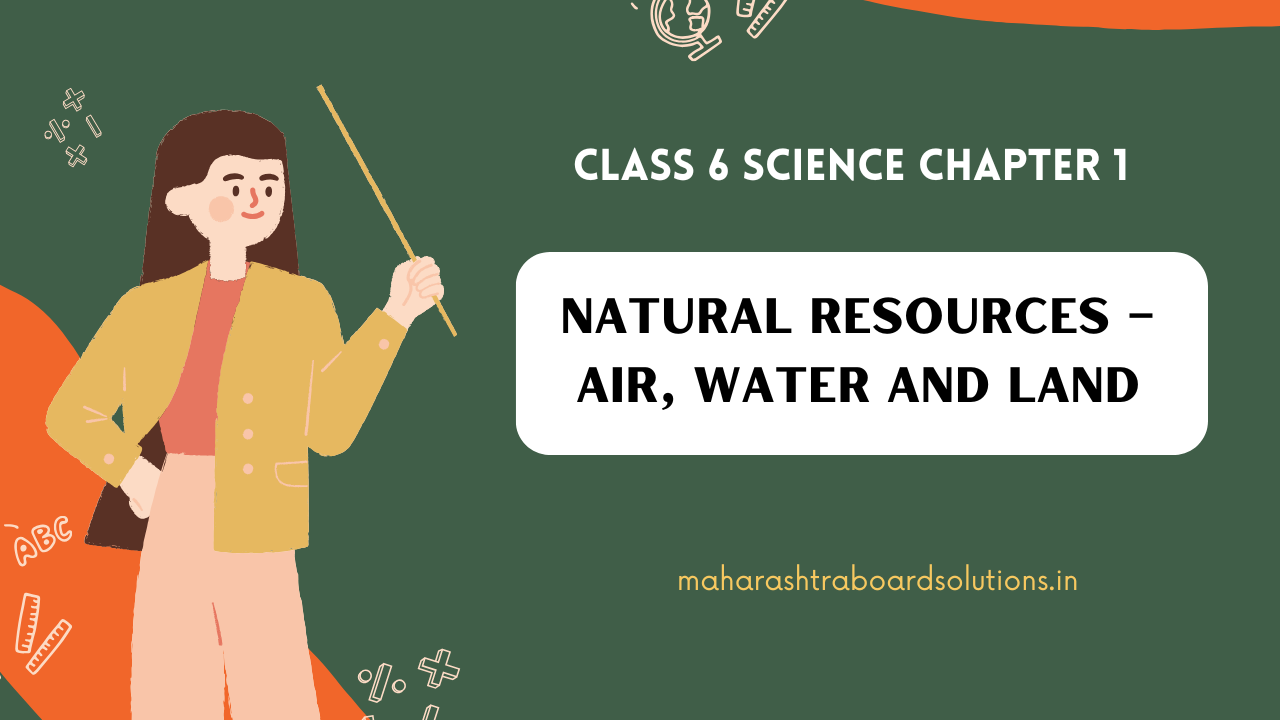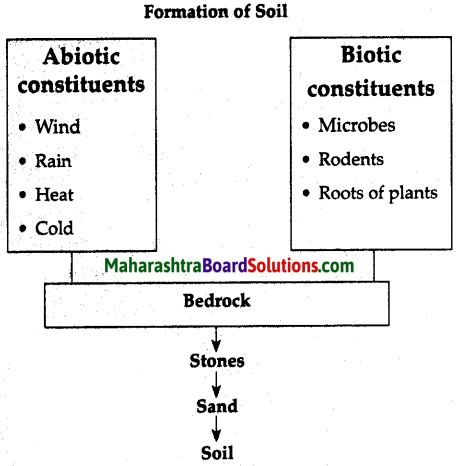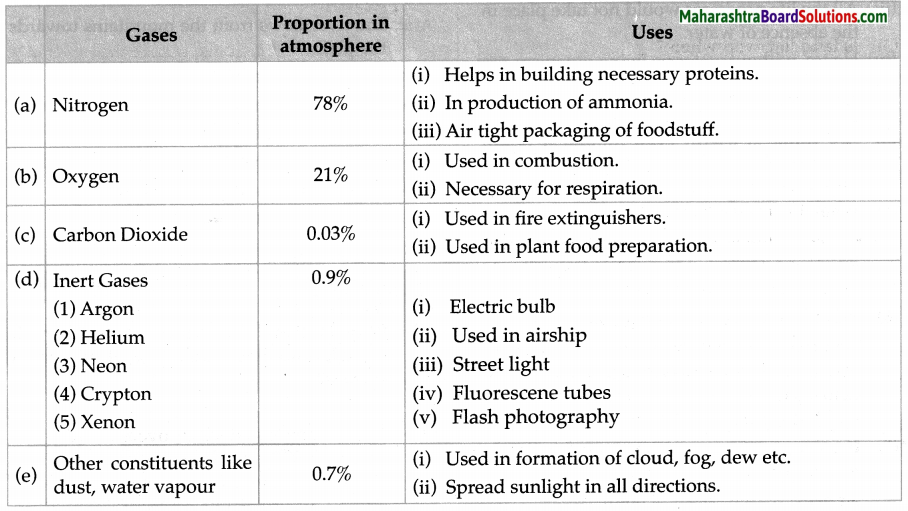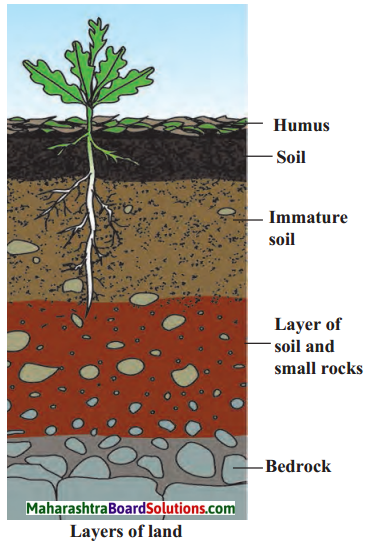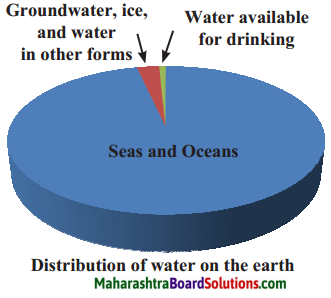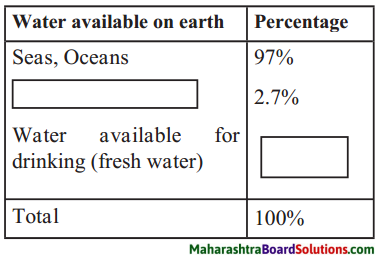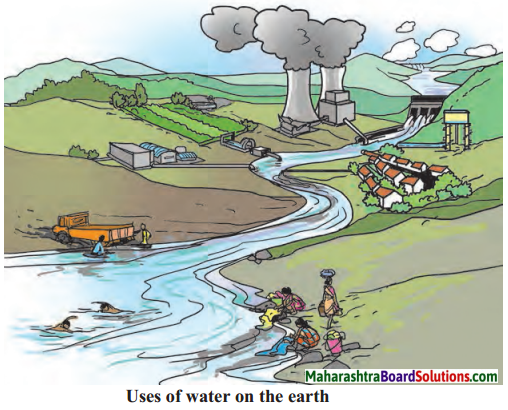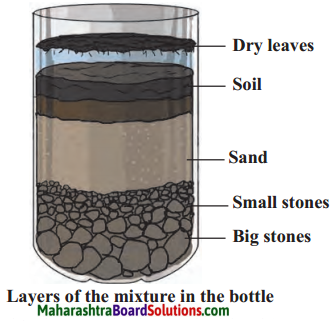Balbharti Maharashtra State Board Class 6 Science Solutions Chapter 4 Disaster Management Notes, Textbook Exercise Important Questions and Answers.
Std 6 Science Chapter 4 Disaster Management Question Answer Maharashtra Board
Class 6 Science Chapter 4 Disaster Management Question Answer Maharashtra Board
1. What are the emergency contact numbers of the following:
Question a.
Police Control Room
Answer:
100
Question b.
Fire brigade
Answer:
101
![]()
Question c.
Ambulance
Answer:
102
Question d.
National level single emergency number for disaster relief
Answer:
108
2. What first aid will you provide in the following situations?
a. Dog bite
b. Scratches/Bleeding
c. Bums/Scalds
d. Snakebite
e. Sunstroke
Question a.
Dog bite
Answer:
First aid is some immediate aid given to a victim or patient before medical treatment is available.
- Wash the wound with a soap solution.
- Cover the wound with a clean and dry cloth.
- Get a doctor’s help.
Question b.
Scratches / Bleeding
Answer:
- Make the person sit or lie down comfortably.
- Clean the bleeding part of the bodywith water.
- Keep it above the level of the heart.
![]()
Question c.
Bums/scalds
Answer:
a. Minor bums
- The injured part should be washed with water or held underwater.
- Give the victim water to drink.
- Clean the wounds using a cotton swab soaked in an antiseptic solution.
- Do not apply oily ointments.
- Cover the wound using dry dressings.
b. Serious bums
- Give emotional support.
- Cover the wound with sterilised cloth.
- Remove jewellery, shoes etc. if easily possible.
- Do not touch or burst the blisters on the skin.
- Do not apply oily ointments.
- Do not try to remove the cloth if it is struck to the burnt skin.
- If the patient is conscious give water to drink but avoid tea or coffee or other stimulating drinks. Get medical aid at once.
![]()
Question d.
Snakebite
Answer:
- Wash the wound with water.
- Give emotional support to the patient.
- Tie a cloth tightly above the wound.
- Get immediate medical help.
Question e.
Sunstroke
Answer:
- Take the patient to a cool place or in the shade.
- Sponge the whole body with cold water.
- Place a cloth soaked in cold water on the neck.
- Give plenty of water or liquids like sherbets to drink.
- If the patient feels like vomiting make him prone i.e. on his/her abdomen with the head turned to one side.
- Get medical help or shift the patient to a hospital.
3. Write the causes of the following:
a. Floods
b. Forest fires
c. Landslides/building collapse
d. Storms
e. Earthquakes
Question a.
Floods:
Answer:
-
- Floods is a frequently occurring natural disaster in all parts of the world.
- Due to excessive rains in the same place, a river overflows its banks causing a flood.
- The water drainage system in big cities falls short when there is heavy rainfall, resulting in choking of gutters and drainage lines.
- Water overflows on to the roads and surrounding houses.
![]()
Question b.
Forest fires:
- Forest fire is an uncontrolled fire in a forest, pasture or grasslands due to natural or man-made causes.
- Natural causes of forest fire can be lightning, volcanic eruptions, friction amongst branches of trees in extremely hot and dry weather.
- Man-made causes of forest fires are clearing land by burning which sometimes goes out of control.
- Campers and hikers sometimes leave behind a potential source of ignition like a lighted cigarette or a campfire.
Question c.
Landslides/building collapse:
Answer:
- Landslide causes due to erosion, slope movement in the downward direction, prolonged rainfall and seepage, vibration caused by earthquakes, deforestation, river erosion.
- Building collapses: Bad design, faulty construction, foundation failure or weak foundation, extraordinary loads, earthquakes, rampant and irregular constructions.
![]()
Question d.
Storms:
Answer:
The formation of high and low air pressure belts in the atmosphere causes changes in weather resulting in strong winds or storms.
Question e.
Earthquakes:
Answer:
- Movements in the interior of the earth release tremendous amount of energy.
- This causes seismic waves leading to movement of the earth’s surface like tremors, shaking, cracking up.
- Such vibrations or quaking in the earth’s crust is known as earthquake.
- Man-made causes like mining, construction of big dams can also lead to earthquakes.
4. Answer the following questions.
Question a.
What is meant by ‘disaster’?
Answer:
A sudden event that causes large-scale damage to life, property and social aspects of a nation or society is called a disaster.
![]()
Question b.
What are the types of disasters?
Answer:
Disasters are of two types: Natural disasters and man-made disasters.
Question c.
What is meant by disaster management’?
Answer:
Taking steps to prevent disasters, making plans to face disasters and developing the capacity for that is called disaster management.
Question d.
Which are the main components of disaster management?
Answer:
Emergency planning and implementation of disaster management work are the main components of disaster management. Community participation is close, related to disaster management.
![]()
5. Find out about the work of a ‘Sarpa-mitra’.
Question a.
Find out about the work of a ‘Sarpa-mitra’.
Answer:
- A sarpa-mitra is a friend of snakes, a person who is trained to protect, save and safeguard snakes.
- Whenever there is a phone call from police or citizens informing the sarpa-mitras about snake sightings, they immediately rush to the situation and rescue the snake that would have been killed at the hands of people.
- Sarpa-mitra are well trained to handle snakes by capturing them, keeping them in baskets or bags before releasing them in the wild.
- They are in contact with the Police Department and Forest Department for rehabilitation of snakes.
- Sarpa-mitra are also trained to perform primary first aid to snake bite victims before they are moved to hospitals.
- Thus, the sarpa-mitra do a commendable job of saving snakes, saving human life without any monetary gains, but for sheer love of snakes.
6. Find out what a first aid kit / box contains.
Question a.
Find out what a first aid kit / box contains.
Answer:
1. First aid kit/box is a necessity at home, workplace, travelling, schools, etc.
2. It contains a cotton roll, sterilized dressing, a pair of scissors, Dettol or Savlon, Dettol soap, adhesive plaster, tablets like Crocin, necessary medicines – painkiller, Tincture iodine, Electrolyte powder, ear/eye drops, Potassium Permanganate crystals, Bumol ointment for cramps.
![]()
7. Suggest remedial measures for dealing with natural or man-made disasters.
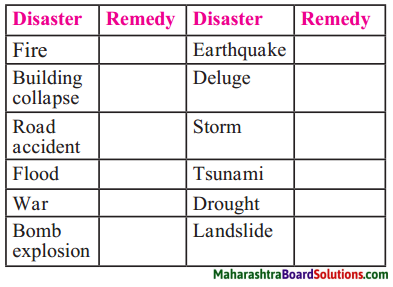
Question a.
Suggest remedial measures for dealing with natural or man-made disasters.
Answer:
- Fire: Use a fire extinguisher. Call the fire brigade. Run to a safe exit.
- Building collapse: Evacuate the building immediately, seek shelter in other safe places. Call the fire brigade or rescue team. First aid should be given to injured people.
- Road accident: Call the ambulance immediately. Give first aid if possible.
- Flood: Do not linger in houses or areas near river banks. Seek shelter in other safe places. Move to safer places at a greater height. Do not step into water currents or drive a vehicle into them.
- War: Take shelter in relief camps. Provide assistance in the rescue mission.
- Bomb explosions: Take shelter in relief camps/safe place. Immediately call the police. Be alert and do not touch the unattended objects.
- Earthquakes: Run to a safe place. Hide below a table.and do not use elevators. Use a staircase.
- Deluge: Take the warnings and signals from the Meteorological Department keep away from river banks and low-lying areas. Take shelter in relief camps.
- Storm: Remain in a safe place. Unplug all electrical devices. Take instructions given to people by meteorological department do not take shelter in dilapilated structures and under trees.
- Tsunami: Move to a safer place, stay alert.
- Drought: Save water, take care of people and cattle.
- Landslide: Landslide may be caused due to excessive rains or cloudbusrt in hilly areas. Do not take shelter at the foot of a hill.
![]()
Activity:
Question 1.
Compile information about measures taken for disaster management in your school.
Question 2.
Make posters, advertisements, banners about disaster management.
Question 3.
Find out the people/organisations that provide aid during a disaster. Obtain their phone numbers, addresses, etc.
Class 6 Science Chapter 4 Disaster Management Important Questions and Answers
Fill in the blanks:
Question 1.
In 1993, many people died due to the earthquake at ……………… in Latur district.
Answer:
Killari
Question 2.
Even today, people of shudder at the memory of ……………… 26 July, 2005.
Answer:
Mumbai
Question 3.
In November 2015, many people died due to flooding caused by heavy rains in ……………… .
Answer:
Tamil Nadu
![]()
Question 4.
Movements in the interior of the earth release tremendous amounts of ……………… .
Answer:
energy
Question 5.
Vibrations or ……………… in the earth’s crust is known as earthquake.
Answer:
quaking
Question 6.
Man-made causes like ……………… and construction of big dams can also lead to earthquakes.
Answer:
mining
Question 7.
A frequently occurring natural disaster in all parts of the world is ………………. .
Answer:
floods
Question 8.
Forest fires spread at a ……………… speed.
Answer:
tremendous
Question 9.
Landslides occur in hilly areas due to a ……………… .
Answer:
cloudburst
Question 10.
To get protection from fire, use ……………… .
Answer:
fire extinguisher
![]()
Match the following.
Question 1.
| Column ‘A’ | Column ‘B’ |
| 1. July 2005 | a. Floods in Tamil Nadu |
| 2. July 2014 | b. Floods in Mumbai |
| 3. November 2015 | c. Earthquake in Latur |
| 4. 1993 | d. Landslide in Pune |
Answer:
| Column ‘A’ | Column ‘B’ |
| 1. July 2005 | b. Floods in Mumbai |
| 2. July 2014 | d. Landslide in Pune |
| 3. November 2015 | a. Floods in Tamil Nadu |
| 4. 1993 | c. Earthquake in Latur |
![]()
State whether the following statements are True or False. If false, correct them.
Disaster Management Class 6 Question 1.
In 1993, many people died due to the earthquake at Malin in Pune district.
Answer:
False: In 1993 many people died due to the earthquake at Killari in Latur district.
Disaster Management Class 6 Exercise Question 2.
Disaster Management Class 6 ExerciseEven today, people of Mumbai shudder at the memory of July 2007.
Answer:
False: Even today people of Mumbai shudder at the memory of July 2005.
Class 6 Science Chapter 4 Disaster Management Question 3.
Increased risk due to high density of population in a limited area can cause disaster.
Answer:
True
![]()
4 Disaster Management Exercise Question 4.
Earthquakes cause huge loss of life and property.
Answer:
True
Question 5.
Forest fire is a controlled fire in a forest, pasture or grassland.
Answer:
False: Forest fire is an uncontrolled fire in a forest, pasture or grassland.
Question 6.
Storms cause no disruption of electric supply.
Answer:
False: Storms cause disruption of electric supply.
Question 7.
Community participation is closely related to disaster management.
Answer:
True
Question 8.
National Disaster Management Authority was established in 2008.
Answer:
False: National Disaster Management Authority was established in 2005.
![]()
Question 9.
During a disaster, keep watching movies on TV.
Answer:
False: During a disaster keep watching news bulletin on TV.
Question 10.
In case of a disaster, use the website www. imd.gov.in
Answer:
True
Answer the following in one sentence:
Question 1.
What are man-made causes of earthquakes?
Answer:
Mining, construction of big dams can lead to earthquakes.
Question 2.
What are forest fires?
Answer:
A forest fire is an uncontrolled fire in a forest, pasture or grassland due to natural or man-made causes.
![]()
Question 3.
State the website to seek government’s help during disaster.
Answer:
To seek government’s help during a disaster we can log on to xvww.imd.gov.in
Question 4.
Where should we take shelter during floods?
Answer:
We should seek shelter in safe places especially safer places at great heights.
Question 5.
What is sunstroke?
Answer:
When we work in the sun continuously for a long time, the body loses a lot of water and minerals. Hence, the person experiences sunstroke.
![]()
Question 6.
Name some poisonous snakes.
Answer:
Some poisonous snakes are cobras, kraits, vipers and sea snakes.
Question 7.
What should we do when we come across a snake?
Answer:
When we come across a snake we should contact a sarpa-mitra.
![]()
Question 8.
What is first aid?
Answer:
Immediate aid given even before medical treatment is available on facing a disaster or accident is first aid.
Answer the following questions briefly:
Question 1.
What are the effects of an earthquake?
Answer:
The effects of an earthquake are:
- Destruction of infrastructure i.e buildings, bridges, roads, railway tracks.
- Change in the direction of the flow of river.
- Huge loss of life and property.
![]()
Question 2.
What are the effects of floods on people?
Answer:
- There is a huge loss of life and property.
- Soil erosion
- Destruction of standing crops.
- After-effects of floods, like spread of diseases and epidemics affecting the health of the people.
Question 3.
What are the effects of storms?
Answer:
- Great damage in the storm affected region.
- Tremendous losses to life and property.
- Disruption of electric supply.
- Disruption of transport and communication.
Question 4.
What are the effects of forest fires?
Answer:
- Great damage to natural wealth and bio-diversity.
- Pollution of air.
![]()
Question 5.
What preventive measures should we take to protect us from fire?
Answer:
To get protection from fire, use fire extinguishers in public places like schools, hospitals, railway stations.
Question 6.
What first aid can be provided to a person if he is bleeding?
Answer:
If a person is bleeding, first make him sit or lie down comfortably. Clean the bleeding part of the body with water and keep it above the level of the heart.
Give scientific reasons:
Question 1.
Why should a dog bite victim get an injection of the anti-rabies vaccine?
Answer:
In a dog bite, there is a risk of infection of rabies through the blood, hence anti-rabies injection is given to the patient.
Question 2.
During a disaster if possible we should take shelter in relief camps.
Answer:
Relief camps provide medicines, food packets, drinking water and first aid. Since these things help victims to restart, people should take shelter in relief camps during a disaster.
![]()
Question 3.
During disaster use battery operated radios and mobile.
Answer:
During disaster, many times there is disruption of electricity, hence battery operated mobiles and radios are convenient.
Can you tell?

Question 1.
What event do you see in these pictures?
Answer:
In this picture we see –
(a) earthquakes
(b) drought
(c) flood
(d) fire
(e) storm
(f) volcanic eruptions.
![]()
Question 2.
What would you have done in these situations?
Answer:
In these situations I would have tried to save my life. (Answer:wers may vary)
Question 3.
Have you experienced such a situation yourself?
Answer:
No. (Answer:wers may vary)
Question 4.
Why do these events occur?
Answer:
This events are disasters and some occur naturally and some are man-made.
Question 5.
According to you, what can be done to deal with such a disaster?
Answer:
To deal with such a disaster, take help of some elders or ask for help immediately. Be alert and use first-aid / get some immediate aid even before medical treatment becomes available.
Use your brainpower!
Question 1.
What disaster can occur in school or on the way to school?
Answer:
1. Disasters that can occur in school: Fire in the school building, experience tremors of earthquake, school building collapses, slab in one of the classroom collapses, getting injured while playing, getting an electric shock.
2. Disasters that can occur on way to school: You meet with an accident while crossing the road or school bus meets with an accident. Area near school gets flooded.
![]()
Classify the following disasters as man-made or natural.
(fire, earthquake, leakage of chemical gases, storms, floods, tsunami, bomb explosions, collapse of a building, war, forest fire)
Answer:
| Man-made disasters | Natural disasters |
| 1. Fire | 1. Earthquake |
| 2. Leakage of chemical gases | 2. Storms |
| 3. Bomb explosion | 3. Floods |
| 4. Collapse of a building | 4. Tsunami |
| 5. War | 5. Forest fire |
| 6. Forest- fire |
Can you tell?
Question 1.
How many children are there in your class at present?
Answer:
There are 50 children in my class at present. (Answers may vary)
![]()
Question 2.
What would happen if five times this number sat in your class?
Answer:
If five times this number sat in my class, the classroom would be crowded. There will be utter chaos.
Question 3.
Which kind of disaster can occur in an extremely crowded places?
Answer:
In an extremely crowded place there can be panic in the classroom, stampede while going out of the classroom, breathless among fellow students.
6th Std Science Questions And Answers:
- Natural Resources – Air, Water and Land Class 6 Questions And Answers
- The Living World Class 6 Questions And Answers
- Diversity in Living Things and their Classification Class 6 Questions And Answers
- Disaster Management Class 6 Questions And Answers
- Substances in the Surroundings – Their States and Properties Class 6 Questions And Answers
- Substances in Daily Use Class 6 Questions And Answers
- Nutrition and Diet Class 6 Questions And Answers
- Our Skeletal System and the Skin Class 6 Questions And Answers
- Motion and Types of Motion
- Force and Types of Force Class 6 Questions And Answers
